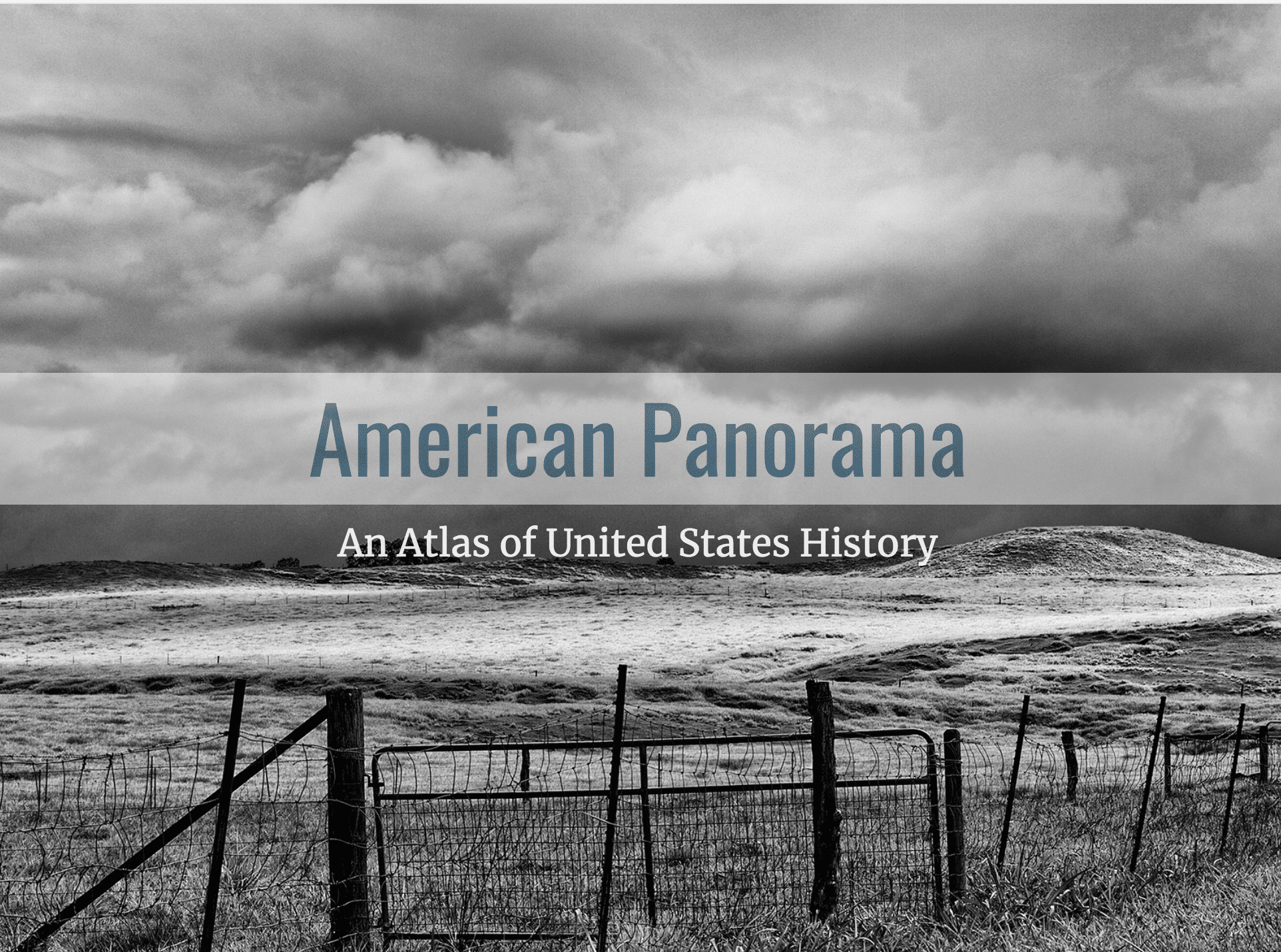
AMERICAN PANORAMA: PART I
Cameron Blevins
03.26.2016
American Panorama: An Atlas of United States History was released in December 2015 by the University of Richmond’s Digital Scholarship Lab. It is a collection of four map-based visualizations focusing on different topics in American history: slave migration, immigration to the U.S., canal construction, and the Overland Trails. Each of these visualizations revolve around an interactive map, with surrounding panes of charts, timelines, contextual data, and primary sources related to the topic. If I could summarize the project’s historical contributions in a single sentence, it would be this one: American Panorama incorporates movement into the history of the United States. To be even more specific, the project shines a new light on the historical movement of people. Its three most compelling visualizations (foreign immigration, slave migration, and the Overland Trails) illustrate some of the most monumental shifts of people in American history. There are certainly other episodes of travel and migration worth studying – Indian Removal or the Great Migration immediately jump to mind – but those selected by American Panorama are certainly three of the most consequential.
Like most digital history projects, American Panorama is a collaboration. Unlike most digital history projects, it’s a collaboration between academic historians and a private company. The Digital Scholarship Lab’s Robert Nelson, Ed Ayers, Scott Nesbit (now at the University of Georgia), Justin Madron, and Nathaniel Ayers make up the academic half of the project. The private half of the partnership is Stamen Design, a renowned data visualization and design studio that has worked with clients ranging from Toyota and AirBnB to the U.S. Agency for International Development. Stamen is also, in the words of tech journalist Alexis Madrigal, “perhaps the leading creator of cool-looking maps.” Stamen’s fingerprints are all over American Panorama. The visualizations are beautifully structured, deeply immersive, and packed with information. In fact, data depth and data density are the hallmarks of these visualizations – I don’t think I’ve ever seen this much historical content visualized in this many different ways, all within a single browser window. Furthermore, the project’s visual interface presents a new and valuable framework to understand the scale of people movements in a way that written narratives can struggle to convey. Writing about thousands or even millions of people moving around over the course of years and decades can often devolve into an abstract swirl of numbers, states, regions, and dates. American Panorama makes that swirl intelligible.

